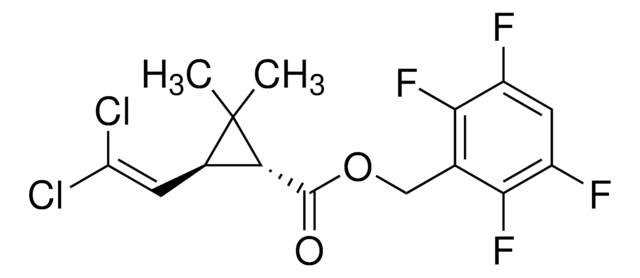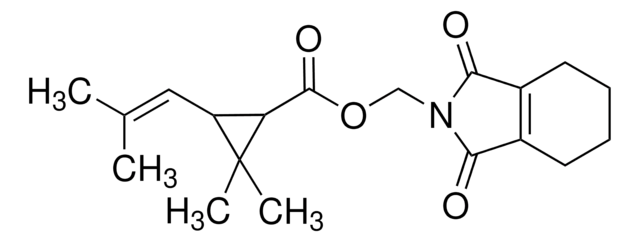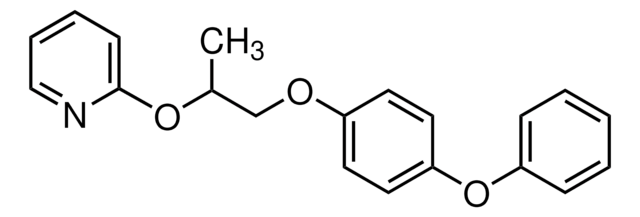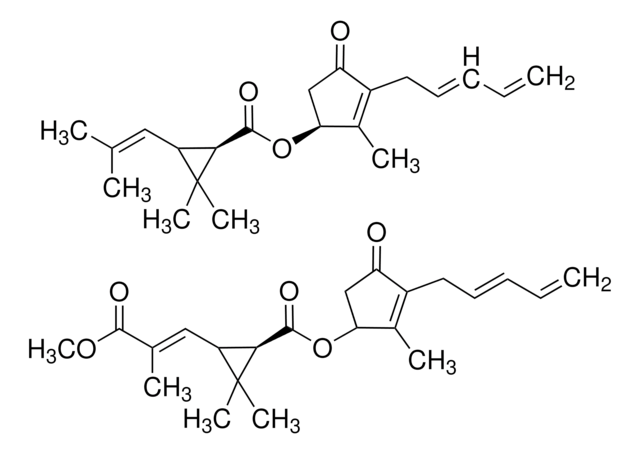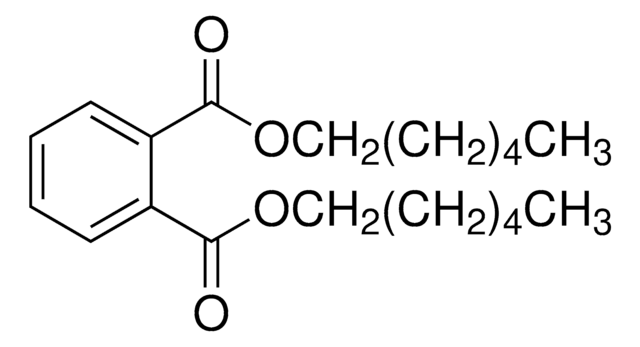32917
Prallethrin
PESTANAL®, analytical standard
Synonym(s):
(RS)-2-Methyl-4-oxo-3-prop-2-ynylcyclopent-2-enyl (1RS,3RS;1RS,3SR)-2,2-dimethyl-3-(2-methylprop-1-enyl)cyclopropanecarboxylate
About This Item
Recommended Products
grade
analytical standard
Quality Level
product line
PESTANAL®
shelf life
limited shelf life, expiry date on the label
technique(s)
HPLC: suitable
gas chromatography (GC): suitable
application(s)
agriculture
environmental
format
neat
storage temp.
2-8°C
SMILES string
C\C(C)=C/C1C(C(=O)OC2CC(=O)C(CC#C)=C2C)C1(C)C
InChI
1S/C19H24O3/c1-7-8-13-12(4)16(10-15(13)20)22-18(21)17-14(9-11(2)3)19(17,5)6/h1,9,14,16-17H,8,10H2,2-6H3
InChI key
SMKRKQBMYOFFMU-UHFFFAOYSA-N
Looking for similar products? Visit Product Comparison Guide
General description
Application
- Sediment samples by dichloromethane (DMC)-based Soxhlet extraction and high-resolution gas chromatography/high-resolution mass spectrometry (HRGC/HRMS).
- Domestic wastewater samples by ultrasound-assisted dispersive liquid–liquid microextraction (UA-DLLME) combined with capillary GC.
Legal Information
Not finding the right product?
Try our Product Selector Tool.
Signal Word
Danger
Hazard Statements
Precautionary Statements
Hazard Classifications
Acute Tox. 3 Inhalation - Acute Tox. 4 Oral - Aquatic Acute 1 - Aquatic Chronic 1
Storage Class Code
6.1A - Combustible acute toxic Cat. 1 and 2 / very toxic hazardous materials
WGK
WGK 3
Flash Point(F)
282.2 °F - closed cup
Flash Point(C)
139 °C - closed cup
Personal Protective Equipment
Choose from one of the most recent versions:
Certificates of Analysis (COA)
Don't see the Right Version?
If you require a particular version, you can look up a specific certificate by the Lot or Batch number.
Already Own This Product?
Find documentation for the products that you have recently purchased in the Document Library.
Customers Also Viewed
Our team of scientists has experience in all areas of research including Life Science, Material Science, Chemical Synthesis, Chromatography, Analytical and many others.
Contact Technical Service
